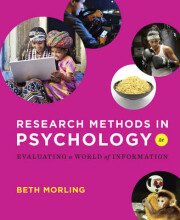Pca and utility
19 important questions on Pca and utility
What do you essentially do with a factor analysis on a test?
How do you perform a factor analysis?
- Go to analyse, dimension reduction, factor
- put all the questions into variables
- extraction; select principle axis factoring for method, check scree plot (after looking at the scree plot, select fixed number of factors; amount of factors)
- rotation; select direct oblimin,
- options; press sorted by size, (optional;) suppress small coefficents .3, do this just know that some values will not be shown.
What does the table of total variance explained tell us?
- Higher grades + faster learning
- Never study anything twice
- 100% sure, 100% understanding
In a scree plot, where is the point of inflection?
How can you tell the amount of factors from a scree plot?
What do do after you've determined the amount of factors you have?
What can you see in the pattern matrix?
- You can see which questions form a cluster together
- which questions belong to which factor
- what the overarching theme of a factor is.
What are the advantages and disadvantages of the classical test theory?
- Intuitive and easy to apply
- It is in SPSS and it is easy to do in excel
- No large sample sizes/many items needed
- – Focus on the test, not on the items
- – Test properties depend on the population
- E.g.,: Reliability and difficulty of a test
- Person properties depend on the test
- I.e., sum score is higher if the test is easy and lower if the test is difficult
What do you do when using the item response theory?
What are the assumptions of the item response theory?
- Uni-dimensionality; you only measure one construct
- local independence; the latent trait explains all item correlations
- monotonicity; the higher the trait the higher the expected score.
How can you tell the item difficulty from an item characteristic curve?
How can you tell the item discrimination from the item characteristic curve?
From the results of an item response analysis, how do you know which items are weak?
At which point of the item characteristic curve is the most information?
What is a scale information function?
How can you tell that items are unfair towards certain groups?
What is computerized adaptive testing
- Instead of giving everyone the same items and the whole range of difficulty
- computerized adaptive testing will adjust difficulty of the next item based on the answer of the last item.
How does the computer pick new questions in computerized adaptive testing
- Based on the information of the last question, and estimate is calculated of the extend to which the trait is present
- the next question is picked to have the highest information on that degree of trait presence
What are the advantages and disadvantages of item response theory
- Population and test independent
- Focus on items
- Statistical complex
- Needs large samples
The question on the page originate from the summary of the following study material:
- A unique study and practice tool
- Never study anything twice again
- Get the grades you hope for
- 100% sure, 100% understanding
































